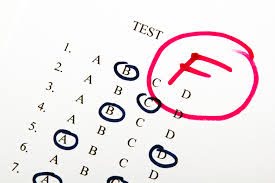
Recently, an article for a small-town news outlet, Clarksville Now, highlighted the case of William, a CMCSS high school graduate with a 3.4 GPA who was functionally illiterate. He is emblematic of the deep-seated issues in America’s education system. His situation reveals the systemic fault lines in identifying and addressing literacy issues in real-time. While his reading and writing difficulties were discovered early and he was placed on an Individual Education Plan (IEP), his development stalled, and he lost ground in reading fluency. While his high grades in classwork and homework obscured his literacy difficulties, his family is now suing, accusing the school system of negligence.
William’s experience connects with a broader literacy crisis highlighted by education reformers like Sarah Morgridge, Literacy In Community (LINC) Senior Manager for Advancement. Drawing from over 11 years of experience, Morgridge highlights how issues like insufficient funding, policies, and the pandemic’s long-term effects have supported the nation’s illiteracy epidemic. Like William’s case, underserved communities across the country struggle with daunting challenges, including poverty and linguistic diversity, that complicate literacy development. Without adequate resources, schools are struggling to catch students up, and too many students like William fall behind.
In addition, as Morgridge noted, hiding test scores and shortfalls by unrealistically high grades only adds to the crisis. This, as well as cutbacks in education spending on both the local and federal levels, are some examples wherein literacy is shortchanged, even as its long-term necessity increases. COVID only concentrated the issue, as lockdowns degraded early development milestones in reading and comprehension.
In America, literacy rates reveal a troubling statistic: although an estimated 79% of adults possess medium to high literacy, a significant 21% are challenged by basic reading and comprehension. This leaves millions of individuals unable to be active citizens or benefit from opportunities that demand basic literacy, the U.S. Department of Education reports. The effects of this crisis are enormous and expansive, causing cycles of poverty, restricted labor opportunities, and lower levels of participation in citizenship. President Trump’s education policy changes, including severe reductions in federal education funding and planned destruction of the Department of Education, threaten to further intensify these issues. By leaving the responsibility in the hands of states without ensuring fair resource distribution, these policies are bound to widen gaps in literacy training, particularly among low-income groups already disadvantaged in terms of limited access to quality programs. The long-term consequences are potentially catastrophic, reinforcing inequality even more and deterring the country’s development.
America’s literacy crisis is less a narrative of underperforming schools than it is a profound moral failure. It speaks to the limitations of current policies and the urgent need for collective action and system change. Others like Morgridge call not only for increased funding but for community-driven solutions, like her work with culturally competent teams and institutions like the Citizens’ Committee for Children. They attempt to break the cycle of neglect through a focus on early literacy initiatives, personalized resources, and family support systems.
As William’s story makes evident, the stakes are impossibly high. If nothing is done, the literacy gap will only continue to widen, locking generations of children into cycles of disadvantage and lost opportunity. The task in front of us is not one of merely improving test scores or metrics but of recommitting ourselves to education as a fundamental human right. The human cost of doing nothing is too great to consider.

